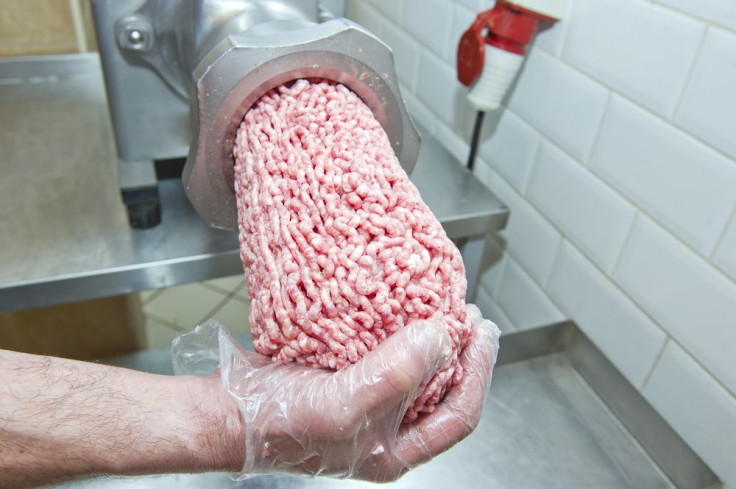Meat Byproduct 'Pink Slime' Makes A Comeback After A Rise In US Beef Prices: What You Should Know

While beef prices in the United States continue to rise, consumers have to be wary while food shopping due to the reemergence of Lean Finely Textured Beef (LFTB). Back in 2012, producers making the controversial ingredient dubbed “pink slime” reportedly closed their doors after it was discovered the meat byproduct had made up around 70 percent of ground beef products on grocery store shelves. Now it appears two of LFTB’s biggest manufacturers, Beef Products Inc. and Cargill Inc., have been quietly selling their product to more food retailers than they did in 2012.
Although its overall production remains at 40 percent below earlier estimates, Cargill said it sales of LFTB have climbed to threefold of what they were in 2012, the Wall Street Journal reported. The company claims it has been working with customers to fine new uses for LFTB, such as frozen meatloaf and sausage; however, 90 to 95 percent is still included in ground beef production. Since shutting down three out of its four production plants in 2012, Beef Products Inc. said it has regained 40 customers thus far.
The “Stop Pink Slime” movement came in to fruition after former United States Department of Agriculture microbiologist Gerald Zirnstein first claimed that 70 percent of beef products contained the ingredient that was formerly used in dog food and cooking oil. Zirnstein told ABC News that he and a colleague attempted to block the use of “the cheap substitute,” but were overruled by superiors. Despite Zirnstein and many other health experts’ objection to pink slime production, the USDA maintained the ingredient was “safe” for human consumption.
“As the head of USDA’s public health agency, I am responsible for ensuring that the nation’s commercial supply of meat, poultry, and egg products is safe for American families,” Undersecretary for Food Safety and Inspection Service, Dr. Elisabeth Hagen said in a statement. “I approach this role not only as a food safety expert and a physician, but also as a mother. And I want to address the national conversation over the last few weeks about the safety of Lean Finely Textured Beef (LFTB). I believe it is important to distinguish people’s concerns about how their food is made from their concerns about food safety. The process used to produce LFTB is safe and has been used for a very long time. And adding LFTB to ground beef does not make that ground beef any less safe to consume.”
Pink slime is made from the fat trimmings of butchered cattle that are warmed and put into a centrifuge to separate pieces of meat that may be left in the fat. These fat scraps from sirloin and roast cuts were once considered unfit for human consumption due to a fat content of 50 percent or more. Following this process, it is soaked in ammonium hydroxide or citric acid to kill bacteria such as Salmonella or E. coli. The subsequent product is frozen into blocks or chips before it is blended with other meat cuts to make ground beef.



























